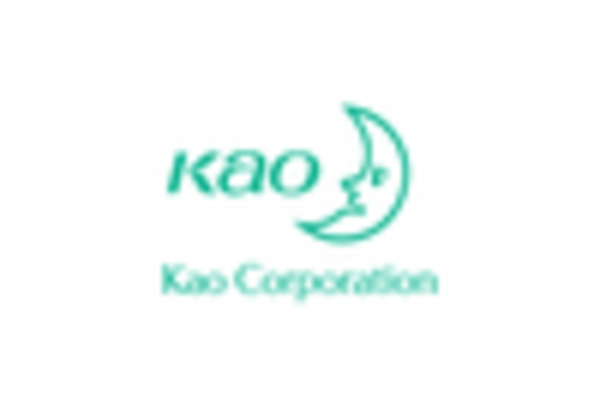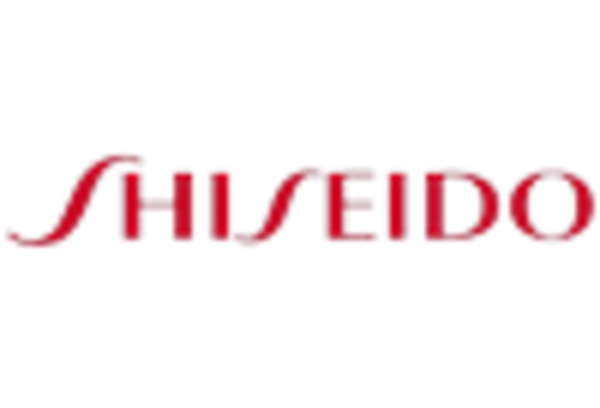The Rice Shampoo Bar Market is currently characterized by a dynamic competitive landscape, driven by increasing consumer demand for sustainable and eco-friendly personal care products. Major players are actively innovating and expanding their product lines to capture market share. Companies such as L'Oreal (FR), Unilever (GB), and Procter & Gamble (US) are at the forefront, leveraging their extensive research and development capabilities to enhance product efficacy and sustainability. L'Oreal (FR) has positioned itself as a leader in the market by focusing on natural ingredients and environmentally friendly packaging, while Unilever (GB) emphasizes its commitment to reducing plastic waste through its solid shampoo offerings. Procter & Gamble (US) is also investing in digital transformation to enhance consumer engagement and streamline its supply chain, thereby shaping a competitive environment that prioritizes innovation and sustainability.
The business tactics employed by these key players include localizing manufacturing to reduce carbon footprints and optimizing supply chains for efficiency. The Rice Shampoo Bar Market appears to be moderately fragmented, with a mix of established brands and emerging players. This fragmentation allows for diverse consumer choices but also intensifies competition among major companies, as they strive to differentiate their offerings in a crowded marketplace.
In August 2025, L'Oreal (FR) announced the launch of a new line of rice-based shampoo bars, which are formulated with organic ingredients sourced from sustainable farms. This strategic move not only aligns with the growing consumer preference for clean beauty products but also reinforces L'Oreal's commitment to sustainability. The introduction of these products is likely to enhance brand loyalty and attract environmentally conscious consumers, thereby strengthening L'Oreal's market position.
In September 2025, Unilever (GB) revealed its partnership with a tech startup to develop AI-driven personalized hair care solutions, including customized rice shampoo bars. This collaboration signifies Unilever's focus on integrating technology into its product offerings, allowing for a more tailored consumer experience. By leveraging AI, Unilever aims to enhance customer satisfaction and retention, which could provide a competitive edge in the rapidly evolving market.
In July 2025, Procter & Gamble (US) expanded its distribution channels for its rice shampoo bars by entering into a strategic alliance with a leading e-commerce platform. This initiative is indicative of Procter & Gamble's commitment to digital transformation and its recognition of the growing importance of online sales channels. By enhancing accessibility to its products, the company is likely to capture a larger share of the market, particularly among younger consumers who prefer online shopping.
As of October 2025, the Rice Shampoo Bar Market is witnessing trends that emphasize digitalization, sustainability, and the integration of advanced technologies such as AI. Strategic alliances are increasingly shaping the competitive landscape, enabling companies to leverage each other's strengths for mutual benefit. Moving forward, competitive differentiation is expected to evolve from traditional price-based competition to a focus on innovation, technological advancements, and supply chain reliability. Companies that can effectively navigate these trends will likely secure a more prominent position in the market.

















Leave a Comment